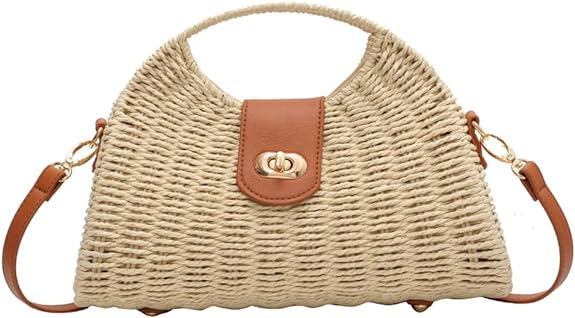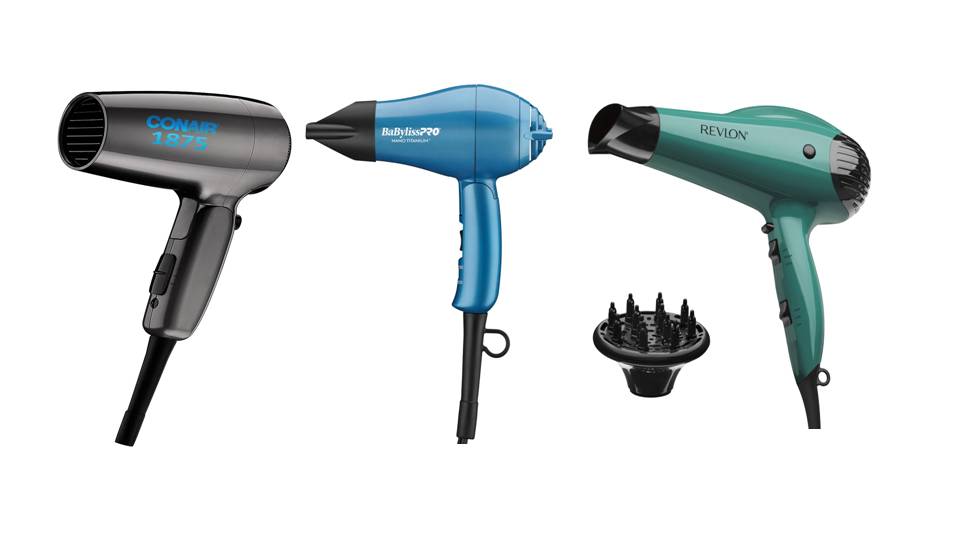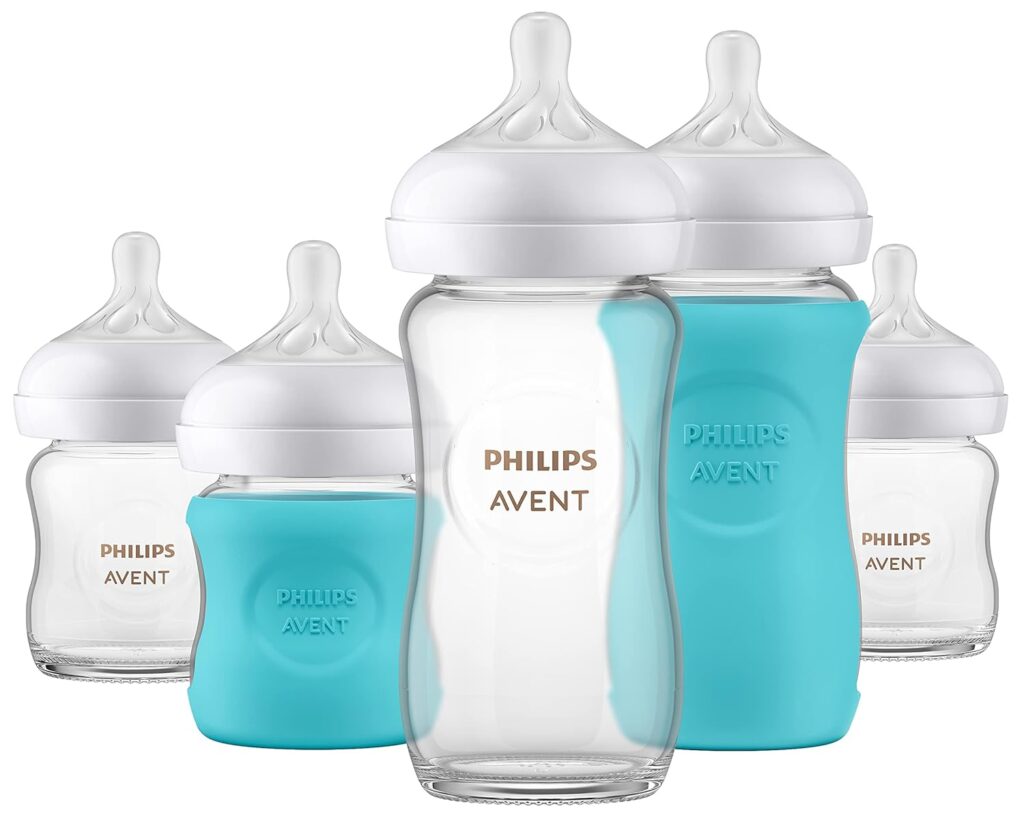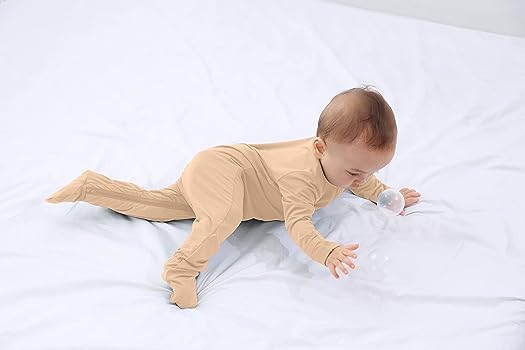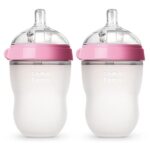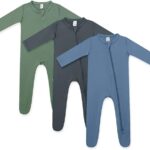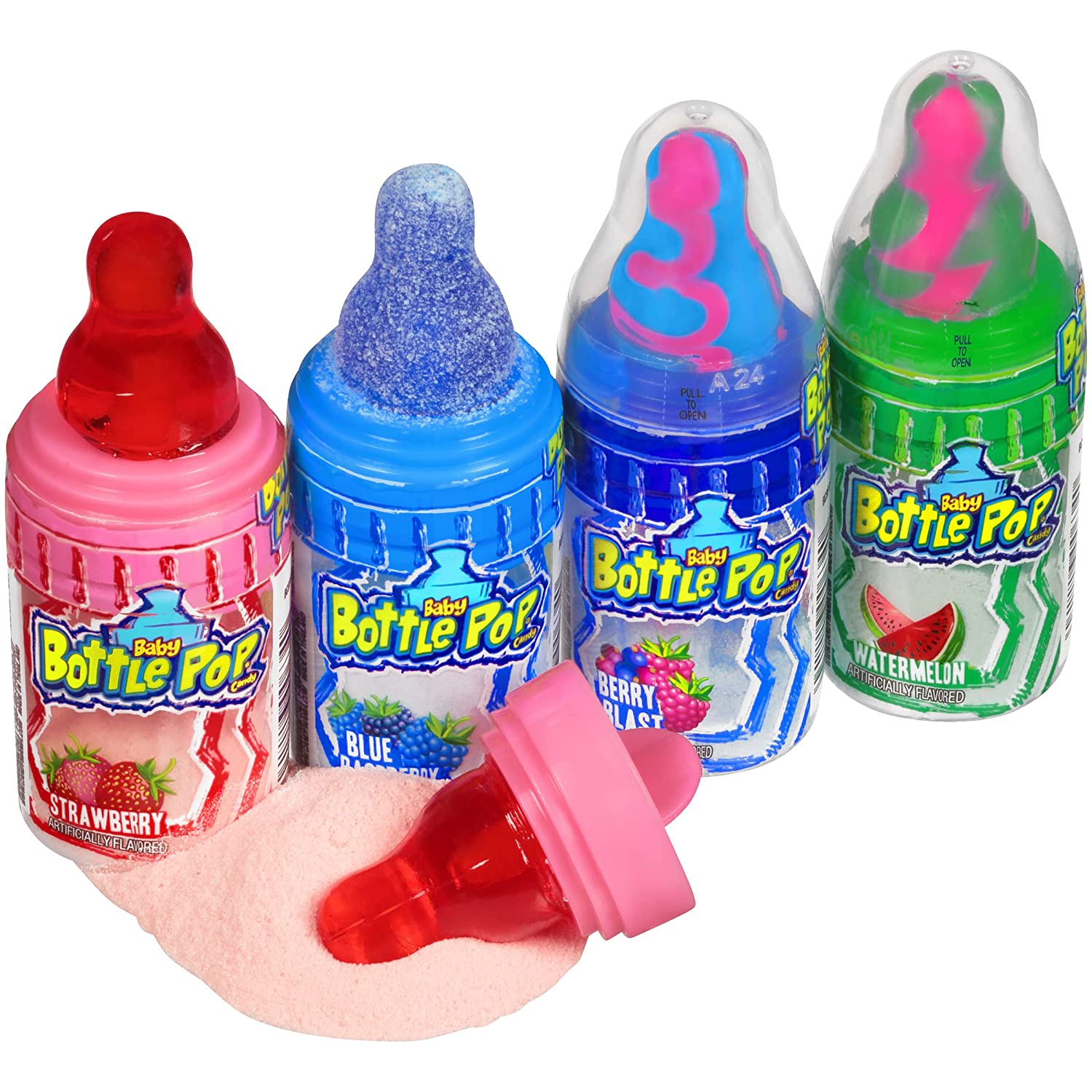Baby Bottle Cleaning: Ultimate guide for Safe & Joyful Feeding
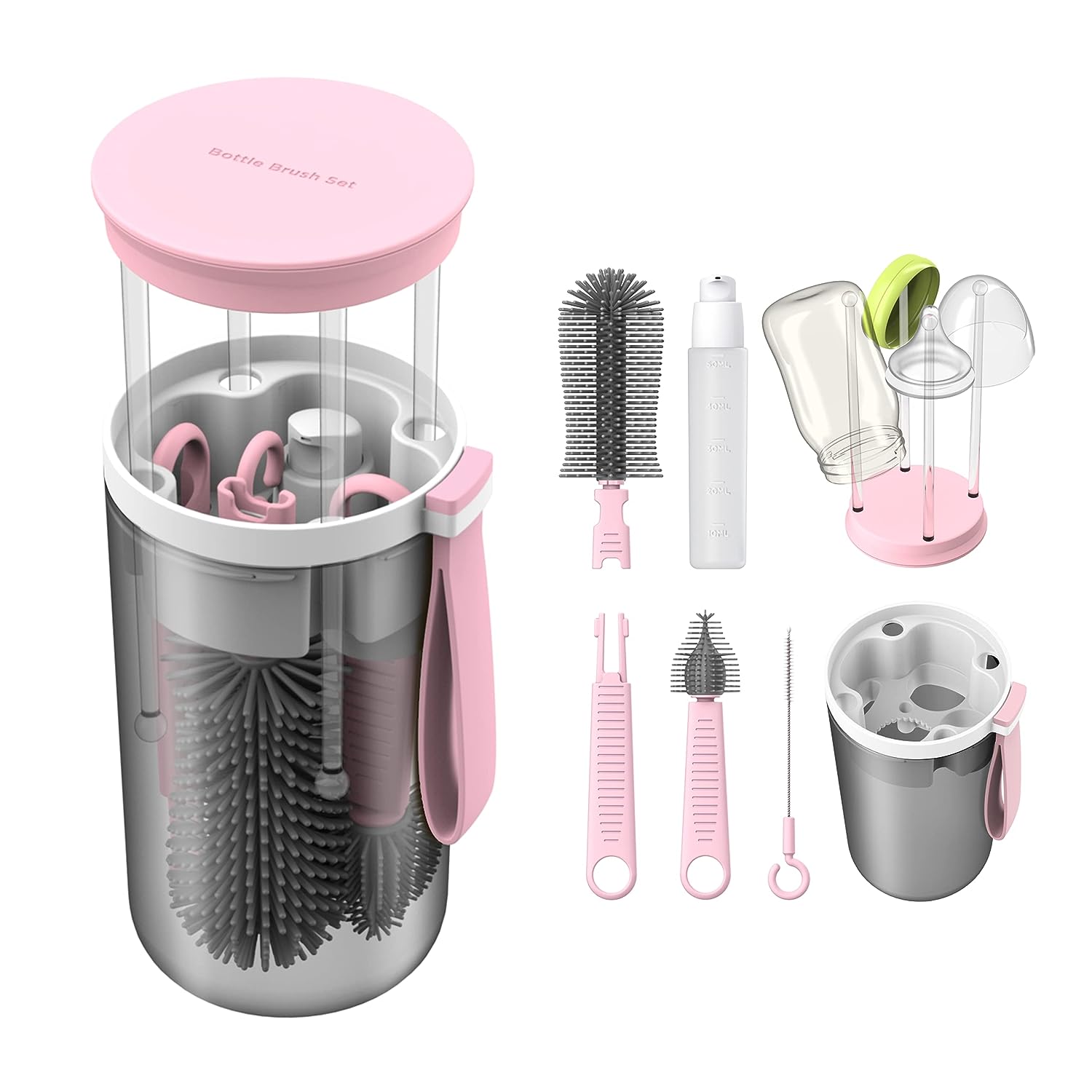
As you cradle your precious baby with joy in your arms, as you embark on the journey of parenthood, one thing becomes abundantly clear: ensuring your baby’s safety and well-being is your top priority. Amidst the moments of wonder and tenderness, there’s an essential aspect that demands your attention. How to maintain impeccable cleanliness in your baby’s feeding equipment? This brings in the companion of hygiene – baby bottle cleaning brush kits. In this guide, we’ll unveil the special role these kits play in safeguarding your baby’s health. We’ll also look at the landscape of baby bottle cleaning with expert insights and practical wisdom.
Introduction: Baby Bottle Cleaning
The aroma of innocence, the gentle touch of tiny fingers, and the heartwarming sound of a baby’s laughter are the treasures that define the joy of parenthood. But within this tapestry of delight lies a responsibility that cannot be ignored. That is the paramount importance of maintaining absolute cleanliness in your baby’s feeding equipment. In this modern age of convenience, the market offers a plethora of solutions, and one stands out as a crucial ally in your pursuit of hygiene – the cleaning brush kit for baby bottles. These unassuming tools hold the power to ensure that every feeding moment is not only nourishing but also safe and free from potential health hazards.
Role of Cleaning Brush Kits:
Guardians of Hygiene: A baby’s immune system is delicate and developing, making them susceptible to infections and illnesses. The correlation between proper hygiene and a baby’s overall well-being cannot be overstated. This is where the indispensable role of cleaning brush kits comes into play. These kits are meticulously designed to tackle the unique challenges posed by baby bottle equipment. They go beyond the surface, delving into the crevices and contours that might otherwise go unnoticed. By eradicating any lingering remnants of milk or formula, these kits act as guardians of hygiene, shielding your baby from potential harm.
Overview of Article Content: Navigating the Path to Hygiene
In the pages that follow, baby bottle cleaning brush kits, will be looked into to uncover their various components and the pivotal features that set them apart. We’ll dive into the intricacies of proper cleaning techniques, step by step, ensuring that you’re armed with the knowledge to maintain an impeccable standard of hygiene. Going deeper, we’ll guide you through the process of choosing the perfect cleaning brush kit – one that aligns with your needs, values, and the safety of your baby.
So, let’s delve into this enriching exploration of baby bottle cleanliness, where each stroke of a brush becomes a testament to your commitment as a parent. From choosing the right tools to mastering the art of thorough cleaning, this guide is your companion on the path to providing your baby with nourishment and also a shield of hygiene and care.
Understanding the Necessity of Clean Baby Bottles
Every infant has a vulnerability that demands our utmost attention and care. As parents, it’s our duty to ensure that every facet of our baby’s environment is geared towards their health and well-being. Among the crucial factors that often go unnoticed is the cleanliness of their feeding equipment, particularly their baby bottles. In this section, we’ll delve into the reasons why clean baby bottles are paramount, exploring the vulnerability of infants to infections, the risks posed by improper bottle cleaning, and the deep connection between hygiene and a baby’s overall well-being.
Infants’ Vulnerability to Infections and Illnesses
The first few months of a baby’s life are marked by rapid growth and development, and their immune systems are still in the process of maturing. This leaves them particularly susceptible to infections and illnesses. The microbes that might be a mere inconvenience to adults can pose a serious threat to infants. Even seemingly harmless bacteria can lead to discomfort, digestive issues, or worse. This vulnerability places a heavy responsibility on parents to provide an environment that is as clean and germ-free as possible.
Risks of Improper Bottle Cleaning and Sanitization
Imagine a scenario where a baby’s bottle, though seemingly clean, still harbours traces of milk, formula, or other contaminants. This is a breeding ground for bacteria and pathogens that can create problems for a baby’s delicate system. Improperly cleaned bottles can lead to upset stomachs, gastrointestinal disturbances, and infections that can be both distressing for the baby and worrisome for the parents. Moreover, mould growth resulting from inadequate cleaning can introduce additional health risks.
Connection Between Hygiene and a Baby’s Well-Being
The correlation between hygiene and a baby’s overall well-being is profound and undeniable. A clean feeding environment translates to a reduced risk of illnesses. This ensures that your baby receives the nourishment they need without compromising their health. It’s not just about physical health – maintaining cleanliness also contributes to a positive emotional and psychological environment. When babies are free from discomfort and illness, they are more likely to thrive, reaching their developmental milestones with enthusiasm and joy.
As parents, we hold the power to shape our baby’s first experiences and lay the foundation for their future health. Clean baby bottles aren’t just containers for milk; they are vessels of care and protection. Understanding the vulnerability of infants and recognizing the risks of inadequate bottle cleaning, we pave the way for a healthy, happy start. Hygiene is the foundation of their well-being.
III. Components of a Cleaning Brush Kit
In the world of baby bottle hygiene, a cleaning brush kit is akin to a trusted ally, equipped with an array of tools designed to conquer the challenge of keeping feeding equipment clean. Let’s delve into the essential components that make up these kits. Each of them plays a crucial role in ensuring your baby’s health and safety.
A. Types of Bottle Brushes: Tailoring to Bottle Varieties
Standard Bottle Brushes: The backbone of any cleaning brush kit is the standard bottle brush. These brushes are designed to tackle the interiors of conventional bottles, reaching deep into the crevices to remove residues that might otherwise linger. They ensure a thorough and complete clean, preparing the bottle for your baby’s next nourishing meal.
Wide-Neck Bottle Brushes: Specialized wide-neck bottle brushes are indispensable. These brushes are designed with broader bristle arrangements to cater for the unique dimensions of wide-neck bottles. In reaching every angle, it guarantees a comprehensive clean even in these distinct bottle types.
B. Nipple Brush Varieties:
Focusing on Hygiene Baby bottle cleaning isn’t solely about the bottle itself. The nipples are equally important components that demand thorough sanitation. Nipple brush varieties included in cleaning brush kits ensure that even the tiniest parts receive the attention they deserve.
Regular Nipple Brushes: These brushes are designed for standard-sized baby bottle nipples. These brushes effectively reach inside the nipple’s narrow channels when cleaning. It helps in removing any lingering residue that might compromise your baby’s safety and comfort during feeding.
Wide-Nipple Brushes: Just as wide-neck bottles have their dedicated brushes, wide-nipple brushes cater for larger nipple sizes. With broader bristle arrangements, they ensure that every aspect of feeding equipment is immaculately clean.
C. Additional Tools: Going Beyond Bottles
Straw Brushes: As your baby transitions to using sippy cups or bottles with straw components, you will need to do thorough cleaning. Straw brushes, included in baby cleaning brush kits, are designed to navigate the intricate curves of straws. This ensure they’re free from debris that could affect your baby’s drinking experience.
Valve Brushes: Many modern baby bottles come equipped with valves that enhance the feeding experience while reducing air intake. These valves, however, can be a breeding ground for bacteria if not properly cleaned. Valve brushes are designed to clean intricate parts, maintaining both hygiene and functionality.
In baby bottle hygiene, a comprehensive cleaning brush kit encompasses more than just brushes for bottle interiors. It extends to various types of bottle brushes, specialized nipple brushes, and additional tools like straw and valve brushes. By including these components in your cleaning routine, you ensure that every aspect of your baby’s feeding equipment remains a safe and pristine haven for nourishment.
IV. Features to Look for in a Cleaning Brush Kit
When it comes to choosing a cleaning brush kit for your baby’s feeding equipment, the challenge lies in the details. Every component, every design element, contributes to the overall performance and satisfaction you’ll derive from your chosen kit. Here, we explore the key features that should guide your decision-making process, ensuring that you invest in a tool that not only meets your needs but also exceeds your expectations.
A. Bristle Quality and Effectiveness: Gentle Cleaning Power
Gentleness Without Compromise: The heart of any cleaning brush is its bristles. Look for a kit with bristles that strike the perfect balance between gentleness and effectiveness. These bristles should be soft enough to prevent scratching or damaging delicate surfaces, yet robust enough to remove even the most stubborn residues. This ensures thorough cleaning without compromise.
Efficiency in Action: The effectiveness of the bristles is a critical factor. They should be designed to reach into every nook and cranny, leaving no residue untouched. Whether you’re dealing with milk film, dried formula, or stubborn stains, the bristles should rise to the challenge, simplifying your cleaning routine.
B. Handle Durability and Grip:
Built to Last: Cleaning baby bottles is a task that you’ll undertake countless times. It’s imperative that the brush kit you choose comes with handles that are built to withstand the test of time. Durability ensures that your investment pays off over the long haul.
Ergonomic Design for Comfort: The handles of your chosen brush kit should be designed with ergonomics in mind. Cleaning can sometimes be a delicate task that requires precision. An ergonomic handle not only offers comfort but also enhances your grip, ensuring that the cleaning process remains effortless and enjoyable.
C. Compatibility with Different Bottles:
One Size Doesn’t Fit All: All Baby bottles come in a variety of shapes and sizes, each catering to different preferences. A stellar cleaning brush kit is one that adapts seamlessly to these variations. Whether you’re dealing with standard bottles or wide-neck designs, the brush kit should be compatible, ensuring that your cleaning routine remains consistent.
D. Multi-Functionality for Varied Baby Bottle Cleaning Needs:
Beyond Bottle Interiors: Baby feeding equipment isn’t limited to just bottle interiors. Look for a brush kit that offers multi-functionality, including specialized brushes for nipples, straws, and valves. This versatility ensures that every component is thoroughly cleaned, maintaining both hygiene and functionality.
In your quest to choose the perfect cleaning brush kit for your baby’s feeding equipment, these features should be your guiding light. Bristle quality and effectiveness, handle durability and grip, compatibility with different bottles, and multi-functionality for varied cleaning needs – these elements combine to create a kit that not only meets your requirements but elevates your cleaning routine to a level of excellence.
V. Tips for Choosing the Right baby bottle Cleaning Brush Kit
As you search for the perfect cleaning brush kit for your baby’s feeding equipment, consider these invaluable tips that will guide you toward a choice that aligns with both your baby’s well-being and your peace of mind.
A. Compatibility with Bottle Types: Tailored Cleaning Solutions
Standard and Wide-Neck Bottles: Look for a cleaning brush kit that offers compatibility with both standard and wide-neck bottle types. This ensures that no matter your preference, your chosen kit can adapt seamlessly, guaranteeing consistent cleanliness.
B. Material Safety Considerations: Protecting Your Baby
BPA-Free and Non-Toxic Materials: Safety is paramount, and this extends to the materials used in your cleaning brush kit. Prioritize kits that are crafted from BPA-free and non-toxic materials. These materials not only ensure your baby’s health but also safeguard its delicate system from potentially harmful substances.
C. Insights from User Reviews: Real-World Experiences
The Wisdom of Other Parents: Before making your decision, take advantage of the insights shared by other parents through user reviews. These real-world experiences offer a glimpse into the practicality, effectiveness, and satisfaction that a particular cleaning brush kit can provide.
D. Longevity and Replacement Factors: A Wise Investment
Quality and Durability: Investing in a cleaning brush kit is an investment in your baby’s health. Consider the quality and durability of the brushes, as well as the manufacturer’s reputation. A kit that lasts longer and maintains its effectiveness over time is a wise choice.
Replacement Guidelines: Regular replacement of cleaning brushes is essential to ensure optimal hygiene. Before making your purchase, inquire about the manufacturer’s recommendations for when to replace the brushes. This knowledge ensures that your cleaning routine remains consistent and effective.
By following these tips, you’re not just selecting a cleaning brush kit; you’re making a conscious choice that resonates with your commitment to providing your baby with a safe, clean, and nurturing feeding environment. In conclusion, remember that the small choices you make today create a ripple effect that shapes your baby’s health and happiness for years to come.
VI. Conclusion
In modern-day parenthood, where every note is a gesture of love and care, maintaining the health and happiness of your baby takes centre stage. As we draw the curtain on this guide to cleaning brush kits for baby bottles, let’s take a moment to reflect on the profound significance of the journey you’re on.
A. Reiterating the Importance of Baby Health
Your baby’s well-being is a treasure that cannot be measured. The vulnerability of infancy underscores the critical nature of maintaining impeccable cleanliness in their feeding equipment. By employing the insights from this guide, you’re not just ensuring their health – you’re nurturing a foundation of strength that will shape their future.
B. Recap of Key Cleaning Brush Kit
Throughout this guide, we’ve explored the essential components of cleaning brush kits – from the types of bottle brushes to specialized nipple brushes and tools for valves and straws. We’ve highlighted the key features to look for in a brush kit, emphasizing the gentle yet effective bristle quality, the durability of handles, compatibility with various bottle shapes, and the multi-functionality that caters to all your cleaning needs.
C. Encouragement for Maintaining Hygiene
The path to maintaining hygiene is one that aligns with your profound dedication as a parent. Every stroke of the brush, every meticulous cleaning routine, is a declaration of your commitment to your baby’s health and happiness. As you embark on this journey, remember that you’re not just maintaining cleanliness – you’re creating a haven of safety, nourishment, and joy.
It is therefore important to know that your efforts towards maintaining hygiene are integral to fostering a positive environment for your baby to thrive. As you hold your baby close, feel the heartbeat of parenthood, and recognize that each cleaning brush stroke is a testament to your unwavering love.
Frequently Asked Questions about Cleaning Brush Kits
Q1: Can I Use Regular Dish Brushes?
Using regular dish brushes might seem like a convenient solution, but it’s not recommended for cleaning baby bottles. Baby bottle cleaning brush kits are specifically designed to address the unique shapes and intricacies of baby bottles, nipples, and other components. These kits ensure thorough cleaning without the risk of scratching or damaging sensitive surfaces.
Q2: How Often Should I Replace Cleaning Brushes?
The frequency of replacing cleaning brushes depends on various factors, including the quality of the brushes, how frequently they’re used, and how well they’re maintained. As a general guideline, consider replacing brushes every 1-3 months or sooner if you notice signs of wear and tear, frayed bristles, or decreased effectiveness. Regular replacement guarantees efficient and your baby’s feeding equipment will remains hygienic.
Q3: Is Hot Water Enough for Cleaning?
While hot water is effective for breaking down some residues, it might not be sufficient for thorough cleaning and sanitization. Baby bottles can harbour hidden pockets of milk or formula that might not be fully dissolved by hot water alone. Using a dedicated cleaning brush kit with specialized brushes ensures that all surfaces are properly scrubbed and sanitized, providing a higher level of cleanliness than hot water alone can achieve.
Q4: Can I Use Soap for Cleaning Baby Bottles?
Using soap to clean baby bottles is a common practice and can be effective if done correctly. However, it’s crucial to use a mild, baby-safe soap and to ensure thorough rinsing to remove any soap residue. Some baby bottle cleaning brush kits come with specialized brushes for cleaning bottle interiors, nipples, and other parts. These brushes, combined with a baby-safe soap, offer a comprehensive solution for maintaining hygiene in your baby’s feeding equipment.



